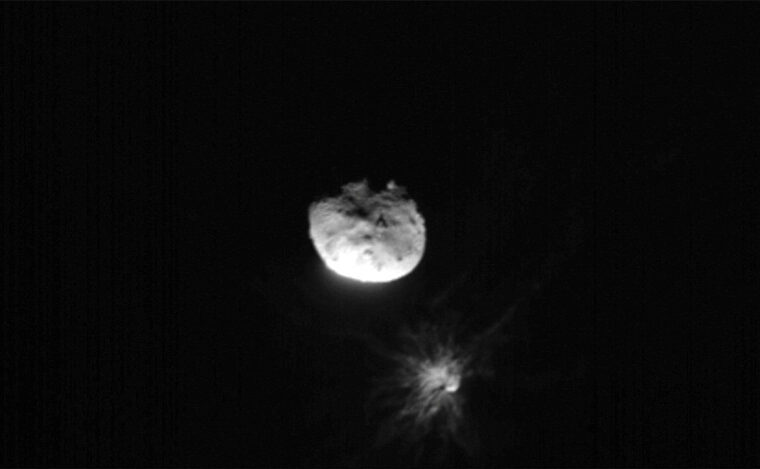The first episode of the 4i-magazine podcast talks about risky asteroids: How to deflect an asteroid avoiding its collision with our planet
There currently are about 1200 asteroids on a publicly available “asteroid risk list“, which means there are so many asteroids with a non-zero chance of colliding with our planet and should therefore be monitored to avoid a disaster. But can such disaster actually be avoided? In the first episode of the brand new 4i-magazine podcast, Paolo Martino, Principal Engineer for HERA, the first European Planetary Defense mission at ESA, the European Space Agency, talks about the first attempt ever tried by humankind to deflect an asteroid’s trajectory.
The technique used to try and “nudge” the chosen target (the small moon of an asteroid called Didymos) consists in hitting it with enough force to change its rotation speed by a non-negligible amount (i.e. 5-8%, or in the case, a few minutes over a 12 hours revolution time). The data collected by HERA after the impact, will allow scientists to study how to apply this technique to other asteroids, should they pose a real danger for our planet.
What is the chance that an asteroid hits our planet? Paolo says that Earth is constantly being hit by asteroids, by their size prevents them from causing real damage to us or the environment. However, mid-size asteroids are known to hit Earth every 10 to 100 years, therefore it is in everybody’s best interest to find a way to change their trajectory and avoid collision. Paolo also debunks the popular belief that larger asteroids are dangerous because they can pierce through our atmosphere and hit the ground, excavating a crater. In fact, two of the most recent events recorded by scientists involve mid-size asteroids (dozens of meters in diameter) that exploded before hitting the ground released such energy that caused damages in a direct and indirect way (e.g. shockwave). Fortunately, both events occurred in scarcely populated areas of Russia (Tunguska in 1908 and Chelyabinsk in 2013).
Kinetic impactor on the NASA’s website: https://www.nasa.gov/content/asteroid-grand-challenge/mitigate/kinetic-impactor
ESA’s and NASA’s collaboration for the Asteroid Impact Deflection Assessment (AIDA): https://www.esa.int/Safety_Security/Hera/Asteroid_Impact_Deflection_Assessment_AIDA_collaboration



